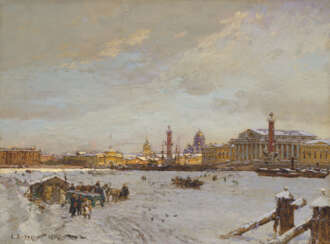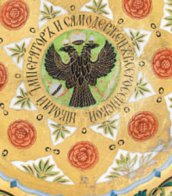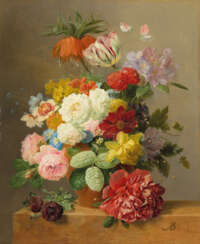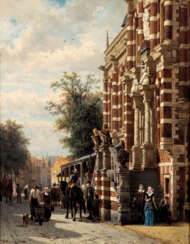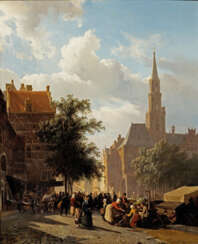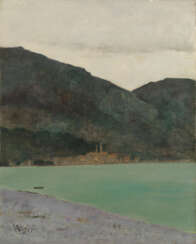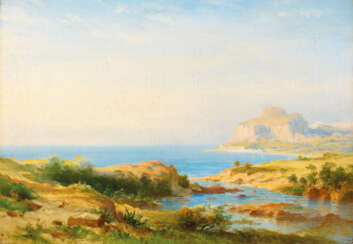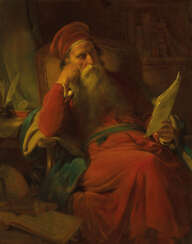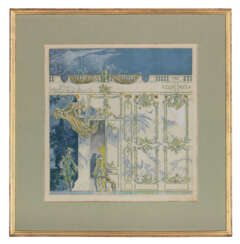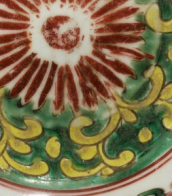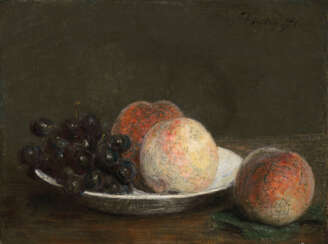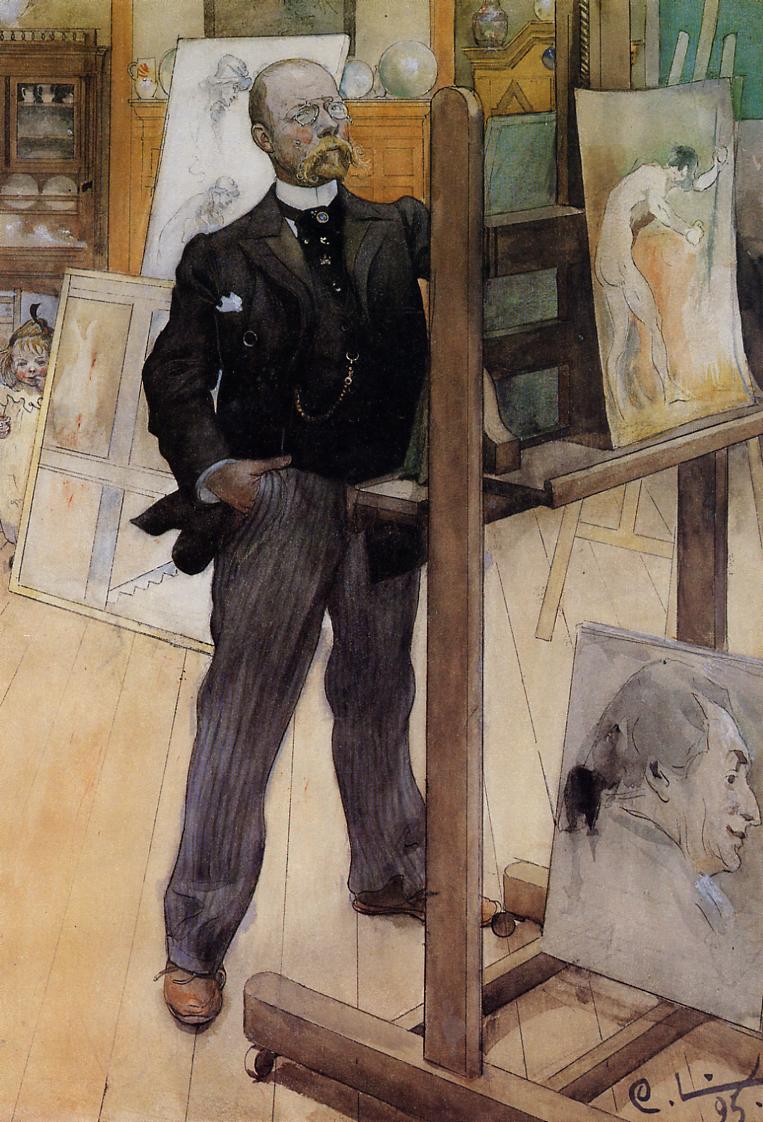романтизм

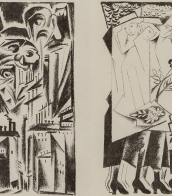

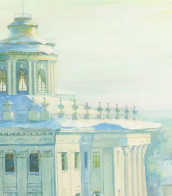

Abraham Solomon was a British painter celebrated for his keen narrative style and vivid portrayal of Victorian life. Born in 1823 in London, Solomon showed artistic promise early on, studying at Sass's School of Art before advancing to the Royal Academy. His works gained recognition for their intricate attention to detail and vibrant character studies.
Abraham Solomon's oeuvre includes significant pieces like "First Class: The Meeting" and "Second Class: The Parting," which reflect on the social dynamics of railway travel, both housed in prominent national galleries in Canada and Australia, respectively. His paintings often explored themes of social and personal tension, displayed in works like "Waiting for the Verdict" and "Not Guilty," which resonated deeply with Victorian audiences for their emotional depth and realism.
Beyond his paintings, Solomon's life was marked by his contributions to art and culture until his untimely death in 1862 in Biarritz due to heart disease. His legacy persists in galleries across the world, including the Royal Holloway College and the Ben Uri Gallery & Museum, which continue to exhibit his works.
For collectors and experts in art and antiques, Abraham Solomon's works offer a poignant glimpse into 19th-century British society and its complexities. His ability to capture the subtleties of human interaction makes his paintings a valuable addition to any collection.
Sign up for updates and be the first to know about new acquisitions and auction events related to Abraham Solomon's art. Stay informed on the legacy and continuing relevance of this distinguished artist.
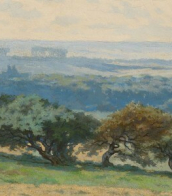
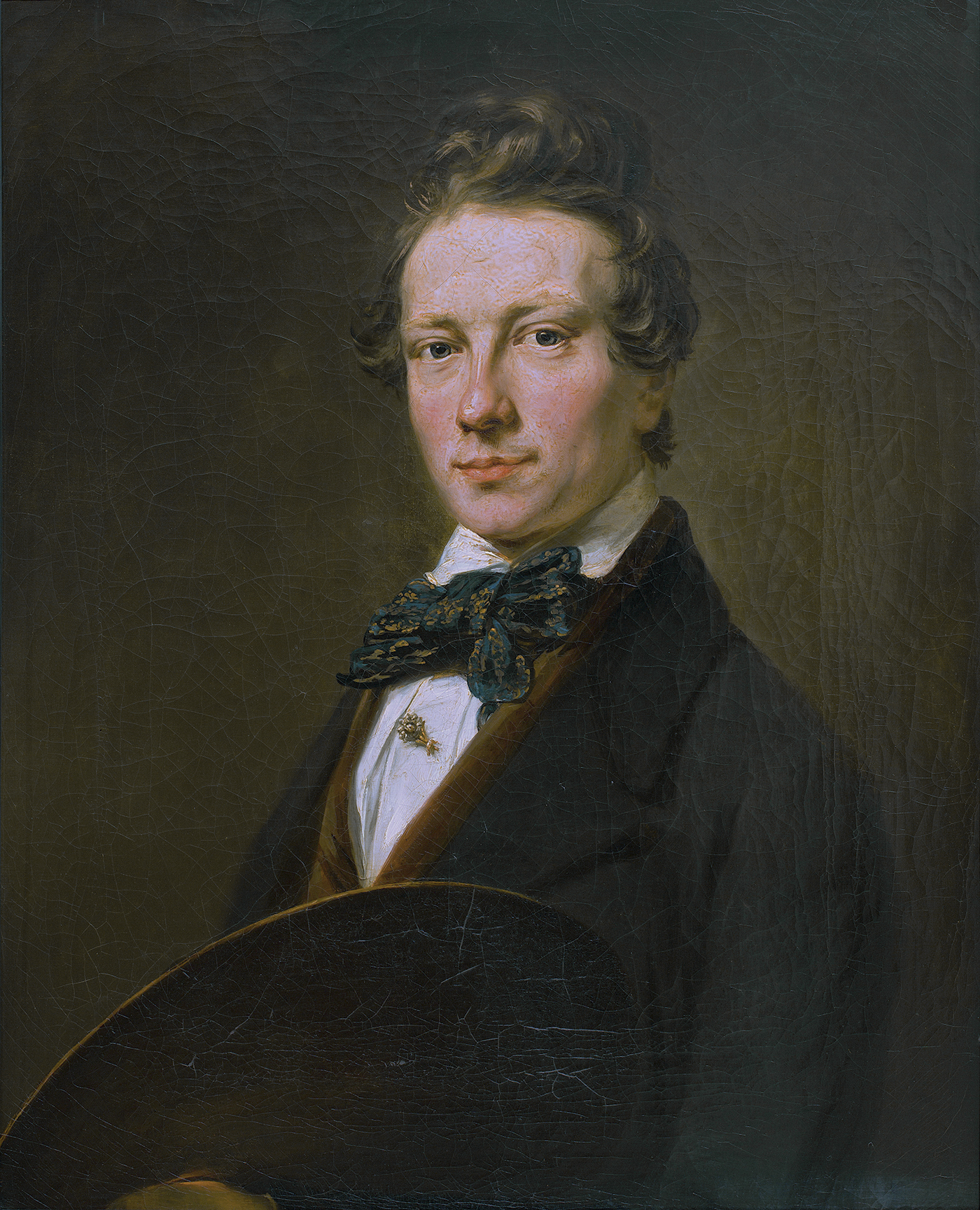
Cornelis Springer was a Dutch 19th-century cityscape painter.
He is known for watercolors, etchings, and drawings, especially of city views and town scenes that he sketched while traveling around the country.


Cornelis Springer was a Dutch 19th-century cityscape painter.
He is known for watercolors, etchings, and drawings, especially of city views and town scenes that he sketched while traveling around the country.


Abraham Solomon was a British painter celebrated for his keen narrative style and vivid portrayal of Victorian life. Born in 1823 in London, Solomon showed artistic promise early on, studying at Sass's School of Art before advancing to the Royal Academy. His works gained recognition for their intricate attention to detail and vibrant character studies.
Abraham Solomon's oeuvre includes significant pieces like "First Class: The Meeting" and "Second Class: The Parting," which reflect on the social dynamics of railway travel, both housed in prominent national galleries in Canada and Australia, respectively. His paintings often explored themes of social and personal tension, displayed in works like "Waiting for the Verdict" and "Not Guilty," which resonated deeply with Victorian audiences for their emotional depth and realism.
Beyond his paintings, Solomon's life was marked by his contributions to art and culture until his untimely death in 1862 in Biarritz due to heart disease. His legacy persists in galleries across the world, including the Royal Holloway College and the Ben Uri Gallery & Museum, which continue to exhibit his works.
For collectors and experts in art and antiques, Abraham Solomon's works offer a poignant glimpse into 19th-century British society and its complexities. His ability to capture the subtleties of human interaction makes his paintings a valuable addition to any collection.
Sign up for updates and be the first to know about new acquisitions and auction events related to Abraham Solomon's art. Stay informed on the legacy and continuing relevance of this distinguished artist.

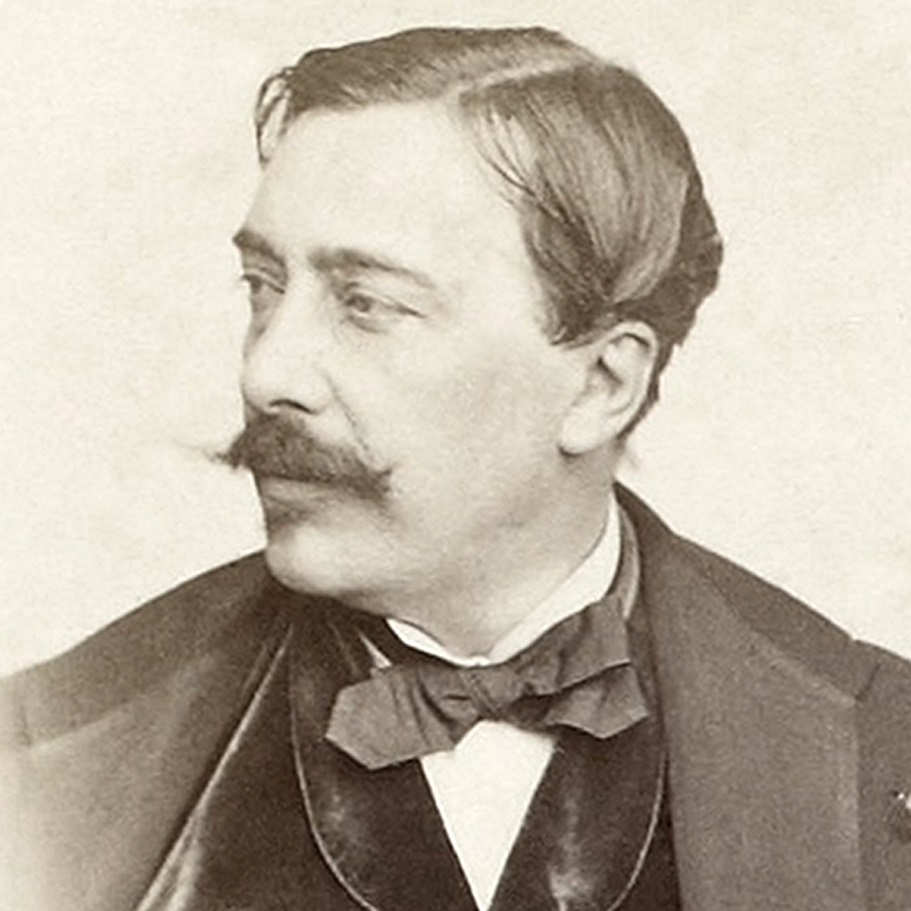
Alfred Émile Léopold Stevens was a Belgian painter, known for his paintings of elegant modern women. After gaining attention early in his career with a social realist painting depicting the plight of poor vagrants, he achieved great critical and popular success with his scenes of upper-middle class Parisian life. In their realistic style and careful finish, his works reveal the influence of 17th-century Dutch genre painting.

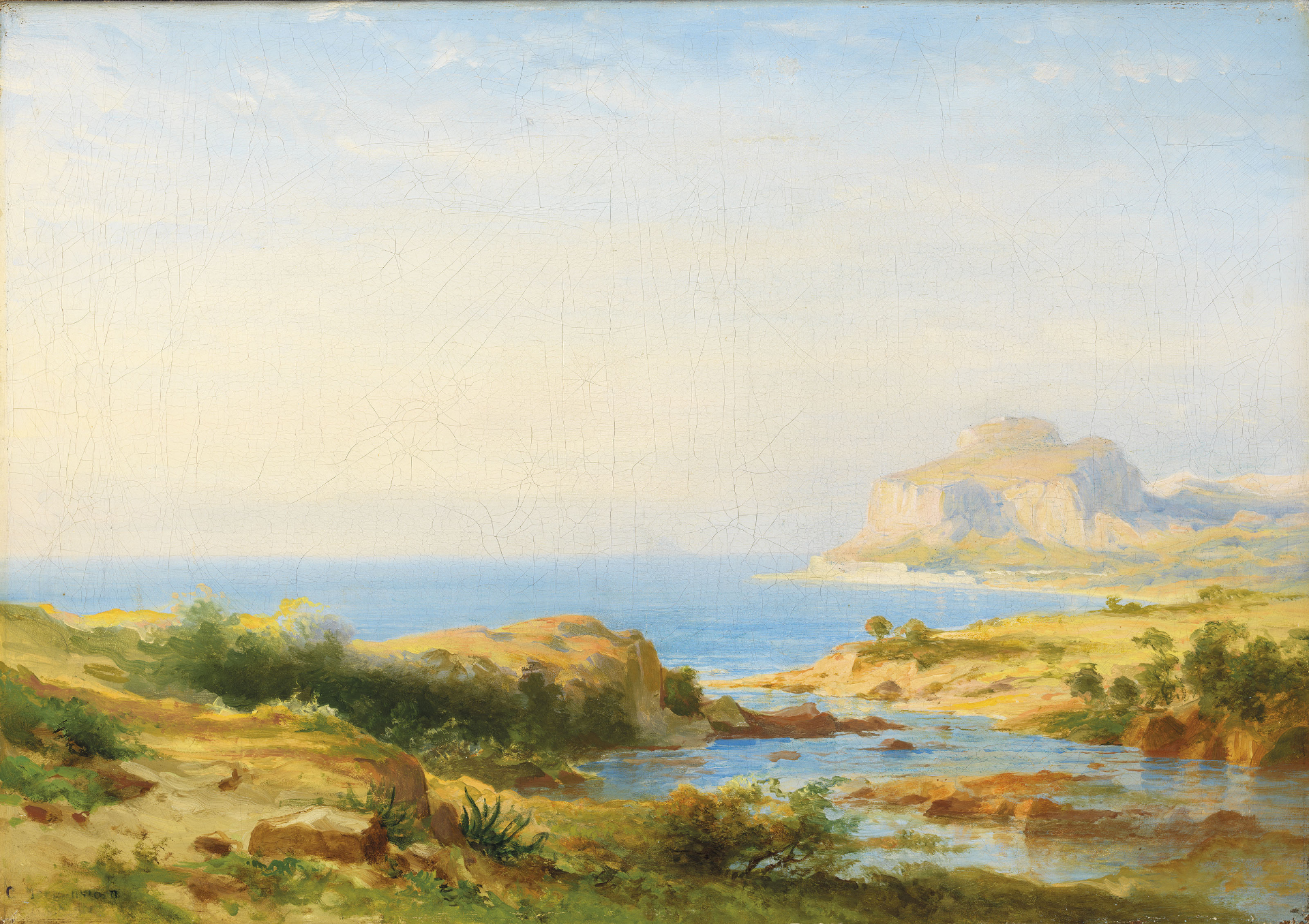
Carl Morgenstern was a German landscape painter of the Romantic period. His father, Johann Friedrich Morgenstern, was an architectural and landscape painter, and Carl received painting and drawing lessons from him at a young age.
At the age of 21 Carl went to Munich and became a pupil of the landscape painter Carl Rottmann. After a three-year stay in Italy, he returned to Frankfurt am Main, where he established himself as an artist and was later appointed professor.
His paintings from the early period mainly show landscapes, which surprise with special light effects and earned him the nickname "Italianist". Despite his desire for artistic innovation, he later devoted himself mainly to repeating popular motifs in order to satisfy his patrons.
Some of his most important works are views of Frankfurt am Main and the city's surroundings, as well as landscapes from the Taunus and along the Rhine.

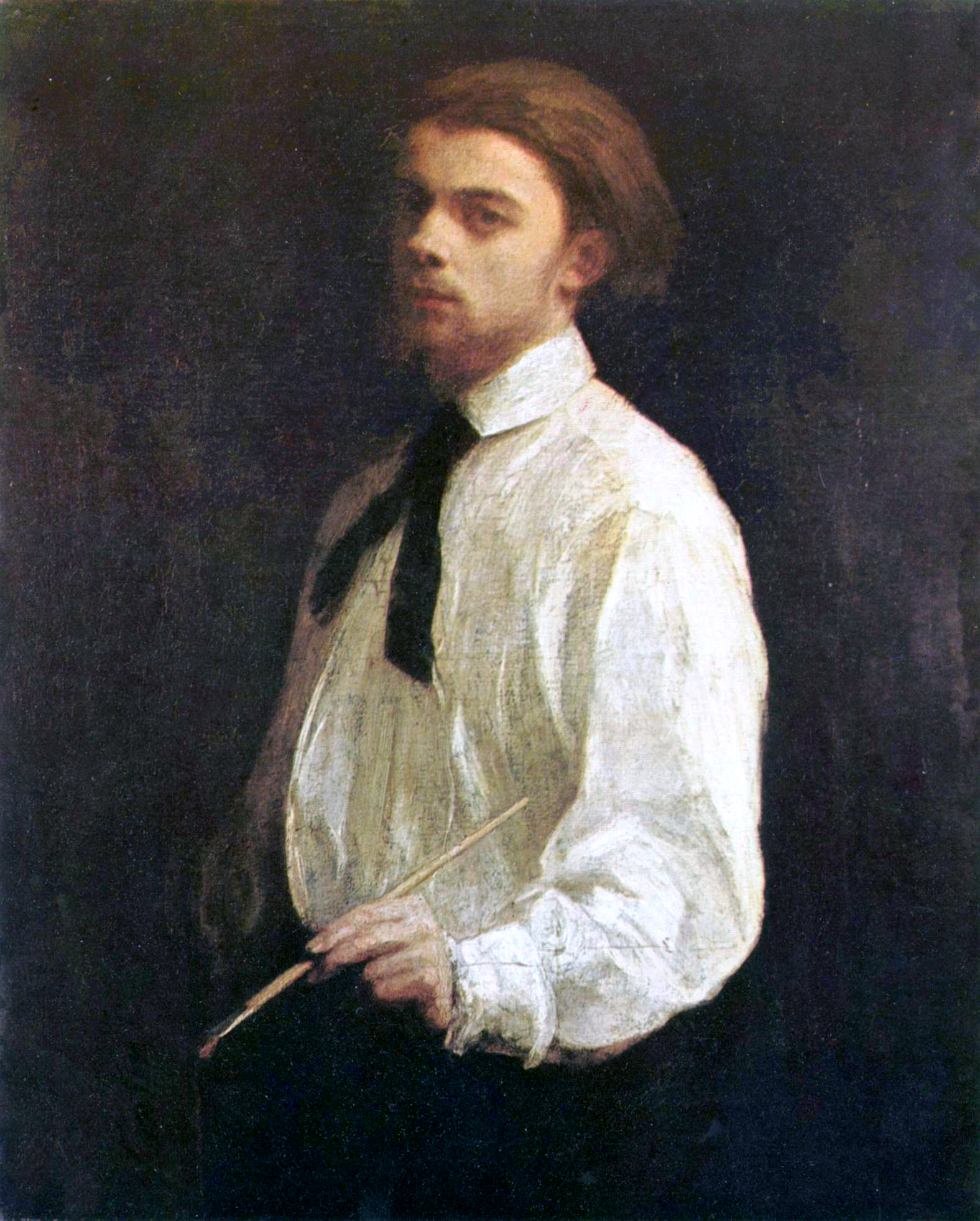
Henri Fantin-Latour was a French painter and lithographer renowned for his exquisite flower paintings and insightful group portraits of Parisian artists and writers. His artistic journey began in Grenoble, where he was born in 1836, but it flourished in Paris, where he moved at a young age to study art. Despite his associations with Impressionists like Édouard Manet and Claude Monet, Fantin-Latour carved his unique path, focusing on still life and portraiture rather than adopting the Impressionist style.
Henri Fantin-Latour's knack for capturing the essence of his subjects is evident in his group portraits, which were not just mere representations but insightful depictions of the artistic and literary circles of his time. His notable works like "A Studio at Les Batignolles" illustrate the camaraderie among artists like Manet, Renoir, and Monet, offering a window into the vibrant Parisian art scene of the 19th century. His still lifes, particularly his flower paintings, are celebrated for their realism and delicate precision, making them a favorite among collectors and art enthusiasts.
In addition to his painting, Henri Fantin-Latour's lithographs, inspired by classical music and imbued with a poetic and symbolic quality, reveal another dimension of his talent, showcasing his ability to transcend the boundaries of realism and delve into the realm of imagination.
For art collectors and experts, Henri Fantin-Latour's works offer a blend of technical mastery and a deep understanding of the interplay between art, music, and literature. His contributions to the art world are remembered and celebrated in museums around the globe, where his works continue to inspire and captivate audiences.
For those interested in exploring more about Henri Fantin-Latour's life and works, visiting exhibitions or keeping abreast of auctions featuring his art can provide valuable insights into his creative genius. To stay updated on related events and opportunities, consider subscribing to updates from art institutions or galleries specializing in 19th-century French art.
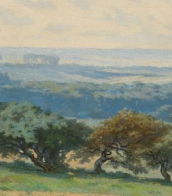
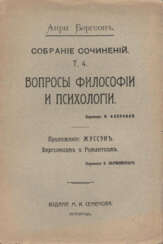

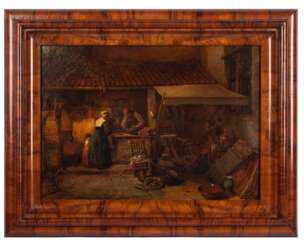




![[Экз. А. Эфроса]. Языков, Н.М. Полное собрание стихотворений / Н.М. Языков; ред., вступ. ст. и коммент. М.К. Азадовского; фронт., суп.-обл., шмуцтитула, титула и переплет: П.А. Шиллинговского.](/assets/image/picture_2314533/5b23a/f3e9kiws89gvosyl1h1dzf6rxlp0ckiax9e1h6na53dlvactckumswo6kdxgjbo1660602731jpg__fix_374_244.jpeg)
![[Экз. А. Эфроса]. Языков, Н.М. Полное собрание стихотворений / Н.М. Языков; ред., вступ. ст. и коммент. М.К. Азадовского; фронт., суп.-обл., шмуцтитула, титула и переплет: П.А. Шиллинговского.](https://veryimportantlot.com/assets/image/picture_2314533/5b23a/f3e9kiws89gvosyl1h1dzf6rxlp0ckiax9e1h6na53dlvactckumswo6kdxgjbo1660602731jpg__fix_374_244.jpeg)



![Грин, А.С. На склоне холмов [и др. рассказы] / А.С. Грин.](/assets/image/picture_1905421/3bf29/u9v8k6cpknl1h4zqz4crudajyjf5wmlpfewlqo8e7s26tomd-vgzb7ftmal-ifl1639497057jpg__fix_374_244.jpeg)
![Грин, А.С. На склоне холмов [и др. рассказы] / А.С. Грин.](https://veryimportantlot.com/assets/image/picture_1905421/3bf29/u9v8k6cpknl1h4zqz4crudajyjf5wmlpfewlqo8e7s26tomd-vgzb7ftmal-ifl1639497057jpg__fix_374_244.jpeg)
